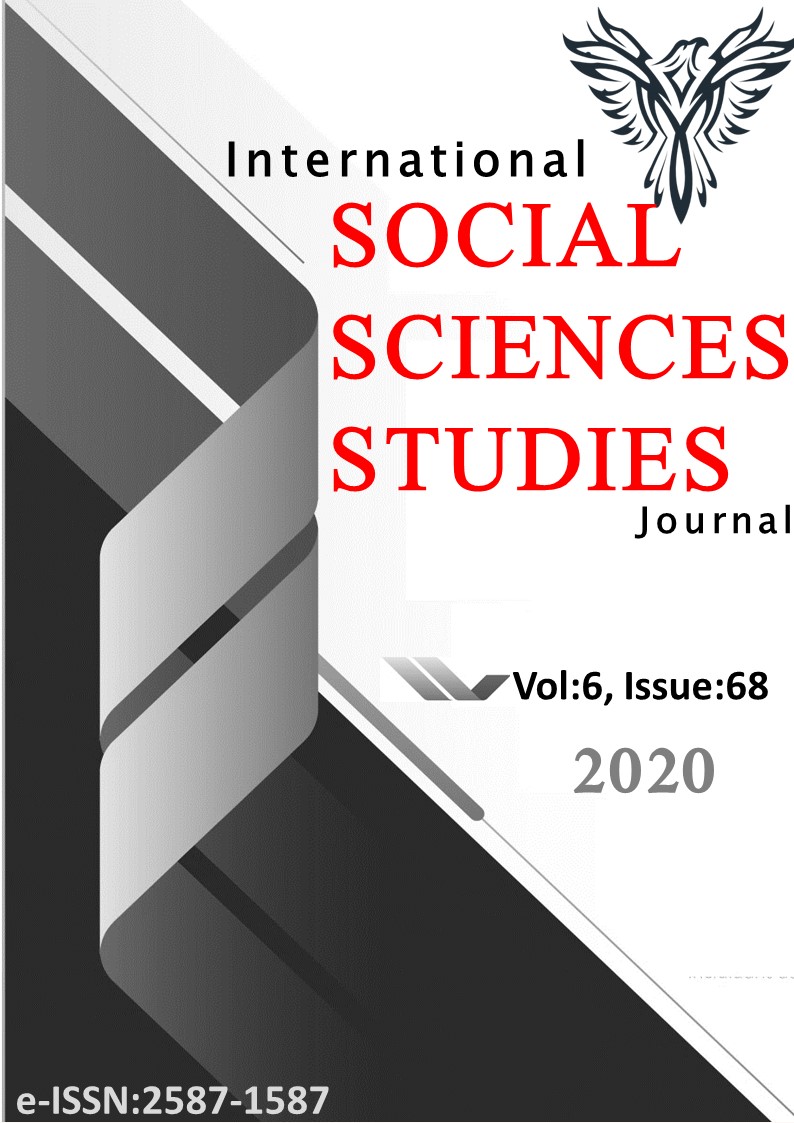20. YÜZYIL BATI RESİM SANATI GEOMETRİK FORM DEĞERLERİNİN İNCELENMESİ: PAUL CEZANNE, PABLO PICASSO, PIET MONDRIAN
Author :
Abstract
Doğada farklı şekillerde karşımıza çıkan geometrik biçimler, insanın doğadaki diğer tüm serbest biçimleri algılanmasına kaynaklık etmektedir. Sanatsal yapının oluşum süreci içerisinde gerçeğin olduğu gibi temsili yerine, var olan kuralların ötesine geçebilen sanatçılar, yeni düşüncelerle kendi form anlayışlarını ortaya koymuşlardır. 20. yüzyıl batı resim sanatında Paul Cezanne, Pablo Picasso, Piet Mondrian bu anlamda önde gelen isimlerdir. Bu sanatçıların form anlayışlarının nasıl olduğu, birbirlerinden etkilenip etkilenmedikleri gibi sorular akla gelmektedir. Bu bağlamda çalışmamız sanatçıların ürettikleri görsel içerikleri yazılı metine çevirerek, verilerin içinde saklı olabilecek gerçekleri ve dönemin form anlayışının benzer veya farklı ilişkilerini ortaya çıkarmayı amaçlamıştır. Veriler nitel içerik analizi metoduyla elde edilmiştir. Her sanatçıdan 2 eser rastgele yöntemiyle seçilmiş ve incelenmiştir. Elde edilen bulgular sonucunda dönemin sanat anlayışlarının oluşumunda geometrik form anlayışı temel yapı özelliğindedir. İncelenen sanatçıların form algısı bakımından sırasıyla birbirlerinden etkilendiği anlaşılmıştır. Sonraki süreçte geometrik soyutlama kavramı olarak diğer sanatçılar tarafında da benimsenmesi üzerinde etkili olduğu düşünülmüştür. Cezanne ile kendini gösteren geometrik formlar, Picasso ile yapboz mantığına dönüşmüş ve Mondrian’ın salt realiteye yönelerek görünenin göz ile algılandığından farklı olarak sanatçının nasıl gördüğü üzerine yoğunlaşmıştır. Bu bağlamda saf araçlardan oluşturulan soyut formlar ile nesneden uzaklaşıldığı sonucuna varılmıştır.
Keywords
Abstract
The geometrical forms that we encounter in different ways in nature are the source of perception of all other free forms in the nature. The artists, who can go beyond the existing rules instead of representing the reality in the formation process of artistic structure, have revealed their own understanding of form with new thoughts. In western painting, 20th century artists Paul Cezanne, Pablo Picasso and Piet Mondrian were the prominent and leading figures in this sense. The questions such as how these artists’ understanding of form were and whether they were influenced by each other come to mind. In this context, this study aims to reveal the facts that may be hidden inside the data and the similar or different relationships of the form understanding of the period by translating the visual contents produced by the artists into text. The data were obtained by qualitative content analysis method. Two works from each artist were randomly selected and examined. The findings indicate that the understanding of geometric form was the fundamental structure in the formation of the art understanding of the period. It has been revealed that these artists were influenced by each other in terms of perception of form. In the following process, it is thought to have been effective on the adoption by other artists as a concept of geometric abstraction. The geometrical forms that manifested itself with Cezanne turned into a puzzle logic with Picasso, and eventually focused on how the visible is seen by the artist rather than how it is perceived with eye thanks to Mondrian, who turned to absolute reality and conducted research to reach the essence beyond what is seen. In this context, it has been concluded that the artists moved away from the object with abstract forms created from pure tools.





